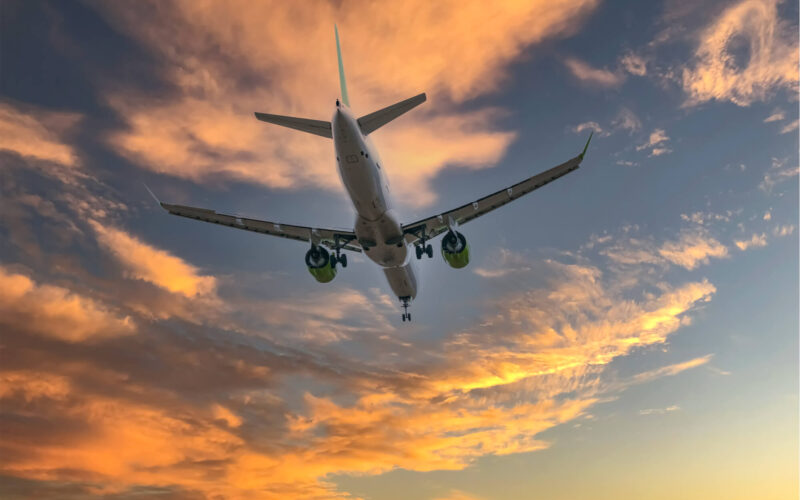Global airline association IATA has urged governments to ease travel restrictions for both vaccinated and unvaccinated travelers after detailing how COVID-19 affected passenger and air freight demand in 2021.
“As COVID-19 continues to evolve from the pandemic to endemic stage, it is past time for governments to evolve their responses away from travel restrictions that repeatedly have been shown to be ineffective in preventing the spread of the disease, but which inflict enormous harm on lives and economies,” IATA Director General Willie Walsh commented.
Air passenger demand, measured in revenue passenger kilometers, fell 58.4% in 2021, when compared with the pre-pandemic year of 2019, the International Air Transport Association (IATA) said on January 25, 2022.
International demand was over 75% below 2019 levels, while domestic demand performed better, just 28% below pre-pandemic levels.

Source: IATA
The figures represent an improvement from 2020, when passenger demand fell almost 66% in comparison with 2019.
However, recovery was delayed at the end of 2021 by the emergence of the Omicron variant of COVID-19. IATA said international demand had been recovering by about 4% month-on-month through 2021, but in December, demand only improved about 2% compared with November.
“Overall travel demand strengthened in 2021. That trend continued into December despite travel restrictions in the face of Omicron. That says a lot about the strength of passenger confidence and the desire to travel,” Walsh said.
IATA said it was time to remove travel bans, get rid of quarantine and testing requirements for fully vaccinated travelers, plus remove quarantines for non-vaccinated travelers.
Walsh said that the spread of Omicron showed that travel restrictions haven’t worked to control the virus. “The measures have not worked. Today Omicron is present in all parts of the world. That’s why travel, with very few exceptions, does not increase the risk to general populations. The billions spent testing travelers would be far more effective if allocated to vaccine distribution or strengthening health care systems.”
He lauded France, UK and Switzerland for easing restrictions, urging Asian countries to follow their lead.
Asia has been worst hit by ongoing travel restrictions, with some markets virtually closed off to travelers. In Hong Kong, stringent restrictions are hurting operations at Cathay Pacific.
In 2021, international passenger demand among Asia-Pacific airlines slumped 93% compared to 2019 levels. Meanwhile, airlines in Europe, the Middle East, North America and Latin America saw international traffic fall 66%-72%.
However, domestic markets have proven more resilient, with those countries with big domestic travel markets enjoying more of a recovery. In the US and China, domestic demand was down just 24% compared to pre-pandemic levels.
What about cargo?
While passenger demand is still a long way from the heady 2019 days, cargo has been booming during the pandemic, enjoying what IATA’s Walsh described as a “stellar year” in 2021. Along with demand for transporting vaccines, PPE and other medical supplies, a lack of belly capacity from passenger planes has left operators scrambling to source freight capacity.
In 2021, demand for air cargo rose by 6.9% compared to 2019 and was up 18.7% on 2020. IATA said that was the second biggest improvement seen since it started monitoring cargo demand in 1990. The biggest rise in demand was in 2010.
With fewer passenger aircraft flying than in 2019, capacity remained restricted in 2021 and was almost 11% below 2019 levels. This lack of supply amid high demand is boosting yields and revenues for those airlines with freight operations, helping to partly mitigate the effect of lower passenger ticket sales.
“For many airlines, it provided a vital source of revenue as passenger demand remained in the doldrums due to COVID-19 travel restrictions. Growth opportunities, however, were lost due to the pressures of labor shortages and constraints across the logistics system,” said Walsh.
Economic conditions, such as global goods trade and demand for PPE shipments, continue to support air cargo, setting the stage for a strong 2022, Walsh said.
However, the supply chain issues seen in November could continue to create headwinds, even if the situation eased in December, partly thanks to additional belly capacity from the year-end surge in passenger travel demand.
IATA noted that labor shortages due to employees being in quarantine, insufficient storage space at airports and backlogs in processing are still putting pressure on supply chains.
“As shortages of labor and storage capacity remain, governments must keep a sharp focus on supply chain constraints to protect the economic recovery,” urged Walsh.

